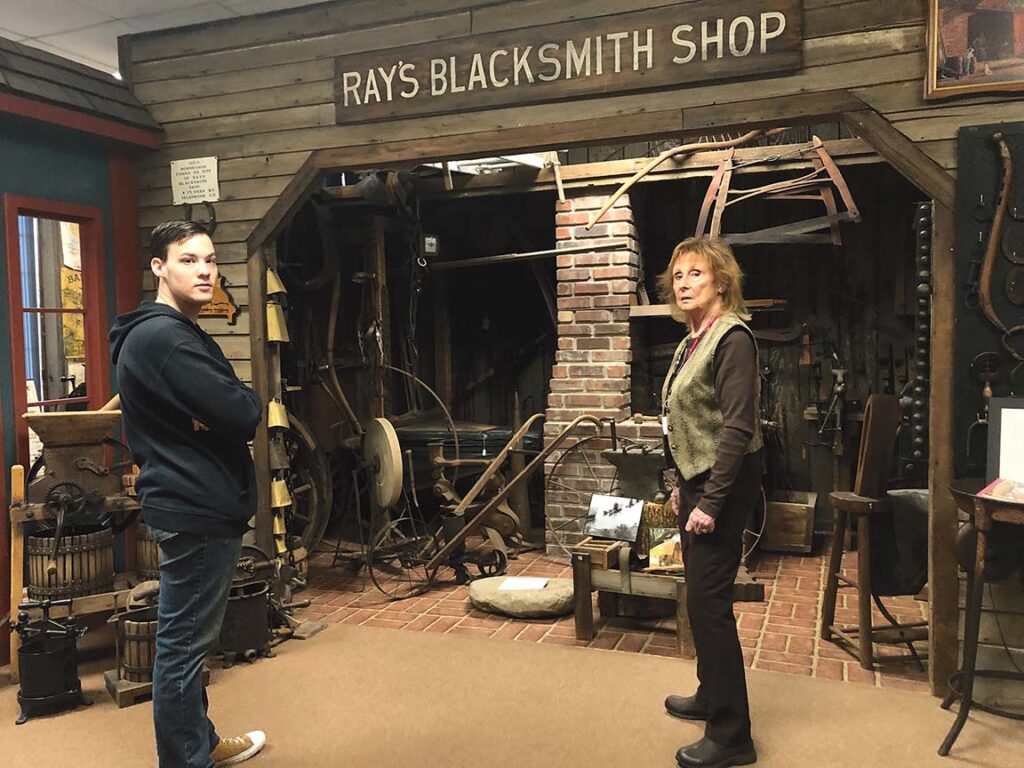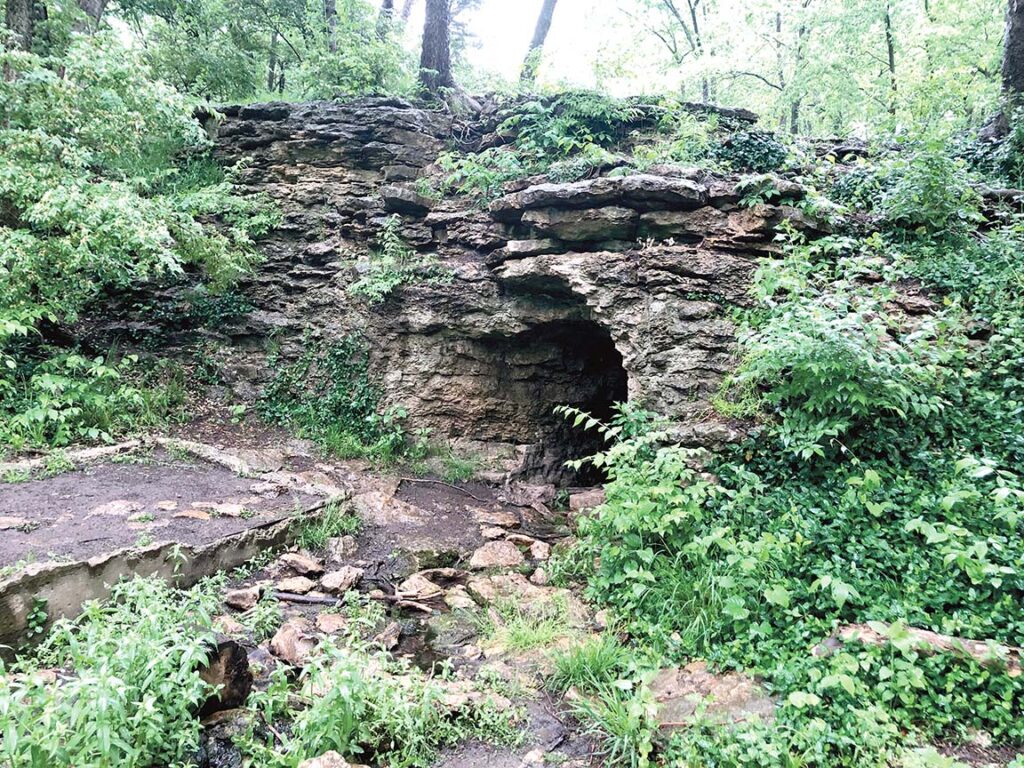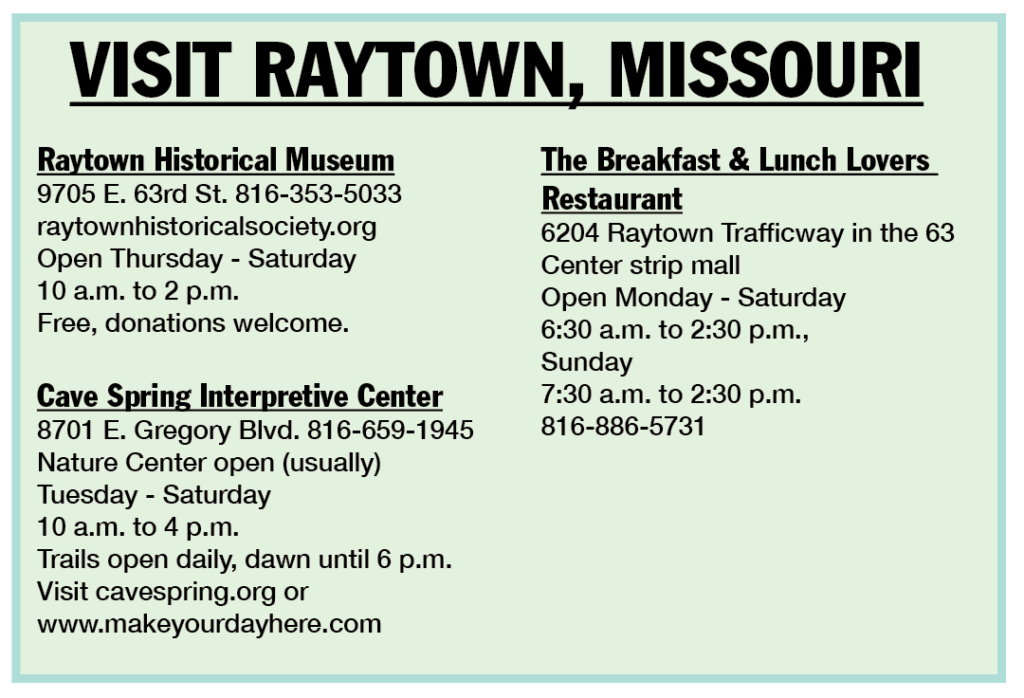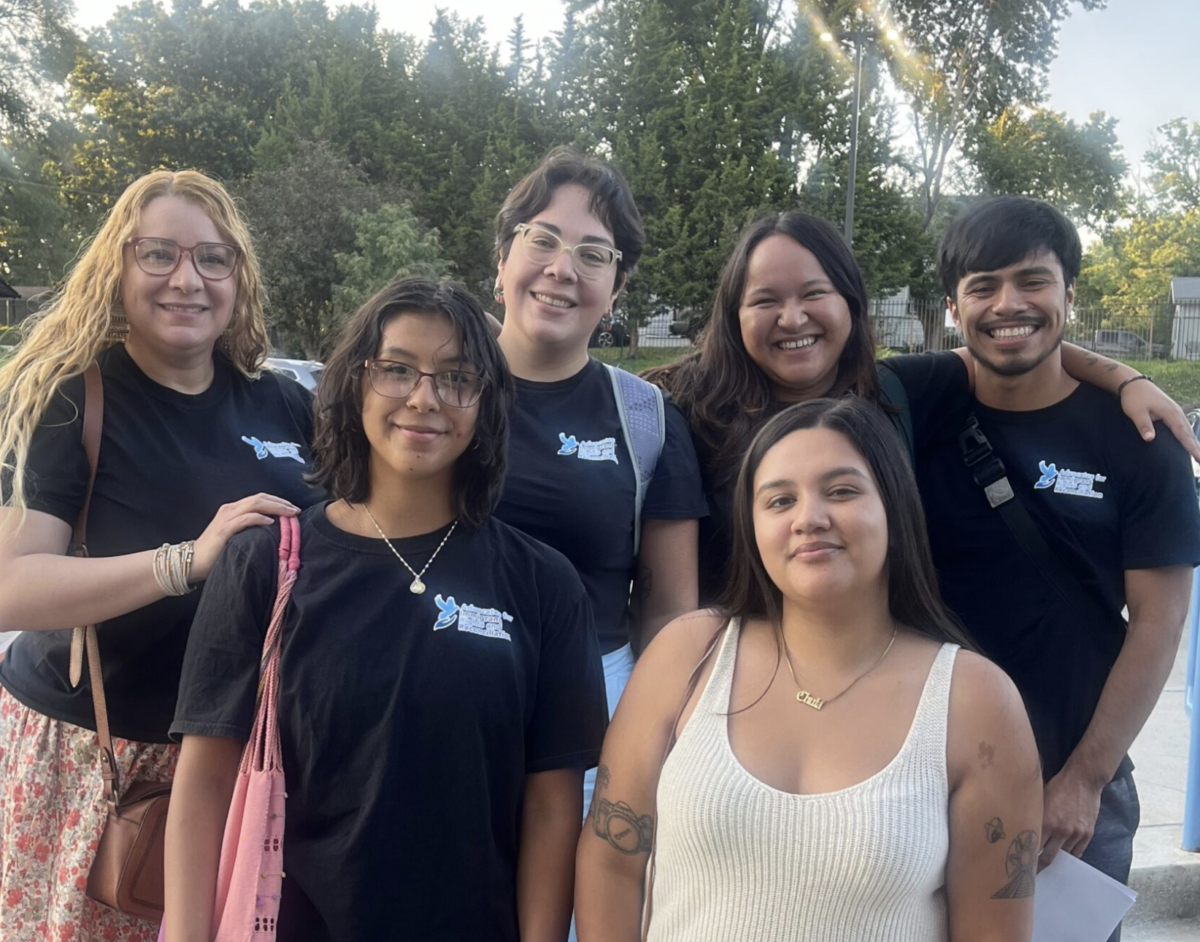
look back in time at the Raytown Historical Society Museum.
Ian Partian (left) pictured with Charlotte Belger, (right)
Dorri Partain
Contributor
Join our Northeast News staff this summer as we hit the road and share with our readers a new weekly feature on where to go and what to do, just a few miles or hours away from home.
For our first adventure, Customer Service Representative Dorri Partain takes her teen son, Ian, on an in-town journey to learn more about local history.
The Gateway to the West may be in St. Louis and Independence may be the “Queen City of the Trails,” but as pioneers made their way west following the California, Oregon and Santa Fe Trails, the first overnight stop was smack in the middle of downtown Raytown, Mo.
There really was a Ray that founded Ray’s Town. William Ray, a blacksmith, set up his shop in 1848 at what is now the intersection of East 63rd Street and Raytown Trafficway, taking advantage of travelers that already needed repairs to their wagons after the first day’s journey.
Just a few doors down from the historical marker that designates the shop’s location sits the Raytown Historical Society Museum, which features a replica of Ray’s blacksmith shop just inside the front entrance. Historical Society members have repurposed Raytown’s old fire station, built in 1945, to showcase the history of their hometown and display artifacts from previous residents.
The day we chose for our trip was cloudy with a chance of rain in the forecast but with nothing else planned, we decided to be like the intrepid pioneers and bear with the weather dealt us – at least we had a car and not a covered wagon as our mode of transport.
Before we left the house it began to rain, but it had stopped by the time we reached our first stop. The museum is staffed by volunteers from the society that greet you and allow you to wander on your own if you like, but for this visit we met up with society president Charlotte Belger, who led us around and pointed out items we might have otherwise overlooked.
While not of particular interest to us, the museum contains the “alumni room” for both Raytown and Raytown South high schools, which led us to discover that while Belger lives in Raytown, she is a Northeaster of sorts; her father lived on Gladstone Boulevard and graduated from Ian’s school, Northeast High, back in the 1920’s.
On the second floor, in another display dedicated to early education, Ian noticed an item in a frame that caught his attention. As it had been donated years ago and had never been identified as such, a Google search verified what he thought it could be – a Medal of Honor from the Civil War. My son is a self-taught military history geek, so he was glad he could identify the medal and the staff was surprised to learn more about the item so they could better tell its story to future visitors.
It’s always a good idea to ask the locals about nearby restaurants and what they recommend, so before we left, we were directed to a place just around the corner. While we could have walked, with the sky still looking like it preferred to rain at some point, we opted to head back to the car and drive instead.
Their directions were spot on, so we found the restaurant easily. The Breakfast & Lunch Lovers Restaurant is located in a strip mall so there was plenty of nearby parking. Once inside, we looked over the extensive menu of breakfast and lunch offerings. A sign next to the stack of menus directed us to place our order at the counter at the back of the restaurant.

Ian opted for a full order of biscuits and gravy with fried potatoes ($9.59) and a lemonade. I had already had an egg for breakfast so opted for a BLT with fries ($9.99) and a sweet tea. I thought the prices were a bit high, but our plates were loaded with food and we each ended up with a to-go box.

Seating options include tables and booths and large windows offer a view of mostly the parking lot. The walls were decorated sparsely with pennants, posters and emblems supporting the Kansas City Royals and Chiefs, and several televisions were tuned to ESPN for any diners that wanted to watch while they enjoyed their meal.
The servers were very pleasant and helpful, and while the sign on the door noted they would close at 2:30, they were still taking orders when we left the restaurant for our next destination.
While we had hoped the weather would hold up at least until our trip was finished, a light rain was falling as we headed back to the car. We were headed back to East 63rd Street when we noticed the historic marker on the opposite corner that marked the location for Ray’s blacksmith shop, but we didn’t stop to read it as we turned westward to retrace our path a bit before turning south onto Blue Ridge Cutoff and our next stop on the trails.
At the intersection of Gregory Boulevard and Blue Ridge Cutoff and across from the Floral Hills Cemetery, pioneers could camp, rest up and fill their barrels with fresh water that flowed from a small cave. Today, that area is an historic site and nature area operated and owned by Jackson County Parks.
Once owned by the Barnes family, who welcomed travelers to their farm and later also operated a tavern, the 36 acres still offer respite with an historic marker, a picnic pavilion, a series of marked trails, a nature center, and a few surprises.
There were a few vehicles in the parking area when we arrived, but there was still a light rain so we doubted anyone was picnicking or walking the trails. Armed with umbrellas, we headed to the nature center only to find it was closed; turns out the center is operated by volunteers but if no one is available the center will be closed that day.
The paved path begins just outside the center, so we ventured on. Along the path, there are signs and markers pointing ahead to the cave but we somehow missed the turnoff and walked past.
As we walked along under our respective umbrellas, we encountered those surprises. I knew they were there because I had been to Cave Spring years before, but with the dark skies and damp air, as we approached they loomed as if encountering an ancient civilization hidden in a deep jungle.

A series of brick and stone chimneys, survivors from a lodge and cabins that were built during the 1930’s before a fire destroyed them a decade later, stand as sentinels to mark the area’s history. Several are just off the paved path, while the last one sits at the end of the paved path.
Though we had only walked less than half a mile, that’s where we turned and headed back the way we came. We didn’t want to venture too far into the woods and we still wanted to see the cave and spring. Passing the chimneys once more, I saw an unmarked path that I was pretty sure led to the cave. I was right, but we were above it, on a ledge. We found another path that kind of led down to the cave, but Ian took a slightly different route and made it down before I did.

While small and seemingly not very deep, the entrance is high enough an adult could stand inside, if they wanted to make their way across the trickling spring. We opted not to try, given our shoes were already getting wet. Turning, we finally found the path that would have been easier to take – that’s sometimes how it is – and we made it to the end of the path and back to our car without additional trials and tribulations.
Our day trip trek along the trails was probably less than a mile or so, but to get to the trail site and back home we traveled a little over 30 miles. Unlike the pioneers that traveled thousands of miles to unsettled territory, crossing mountains, rivers and streams, our journey along a short portion of the trails was made much easier with paved roadways and bridges and instead of another day’s journey ahead, we went to a cozy home to dry out our shoes and umbrellas, the only misfortune we endured.



















